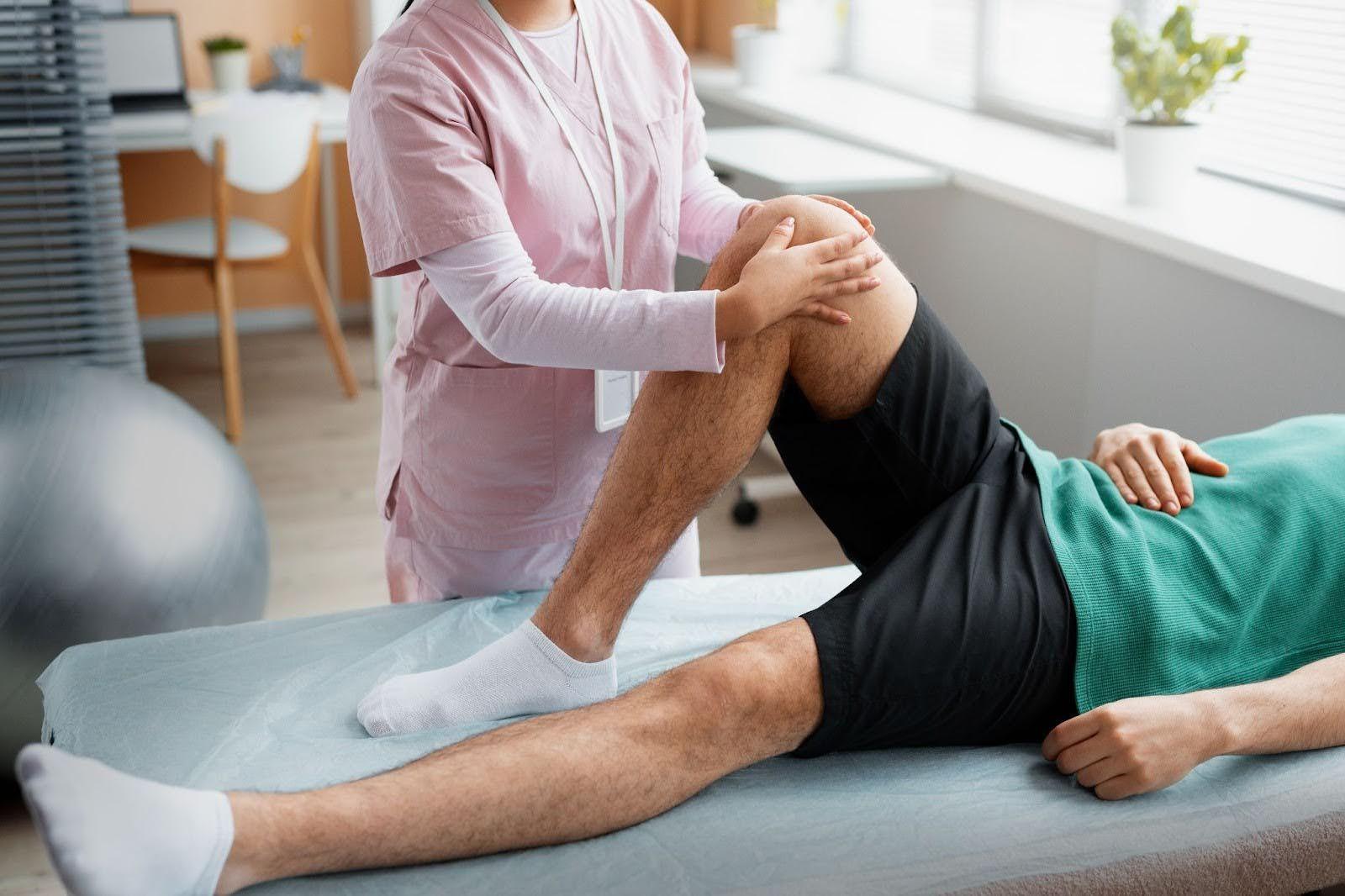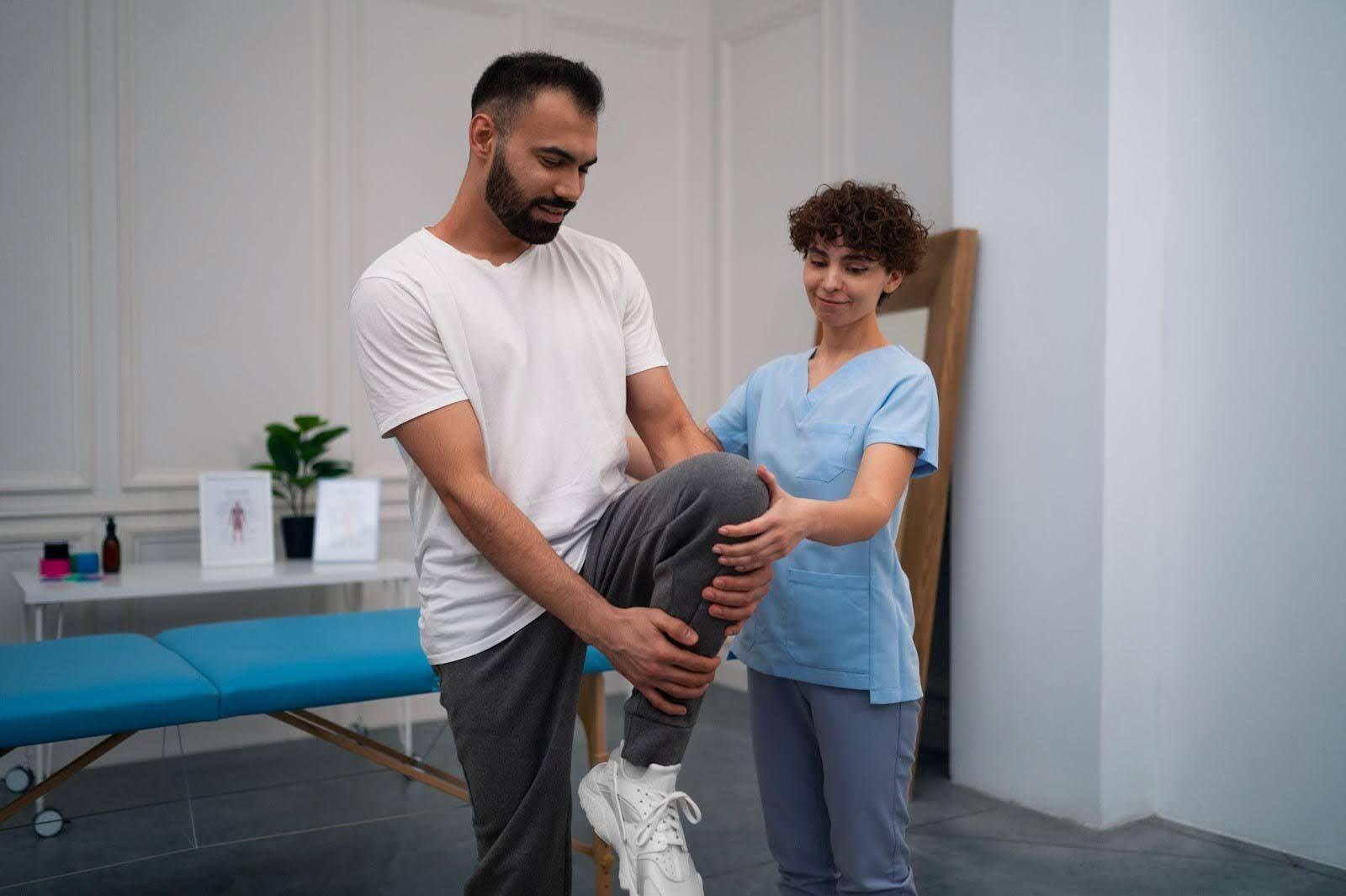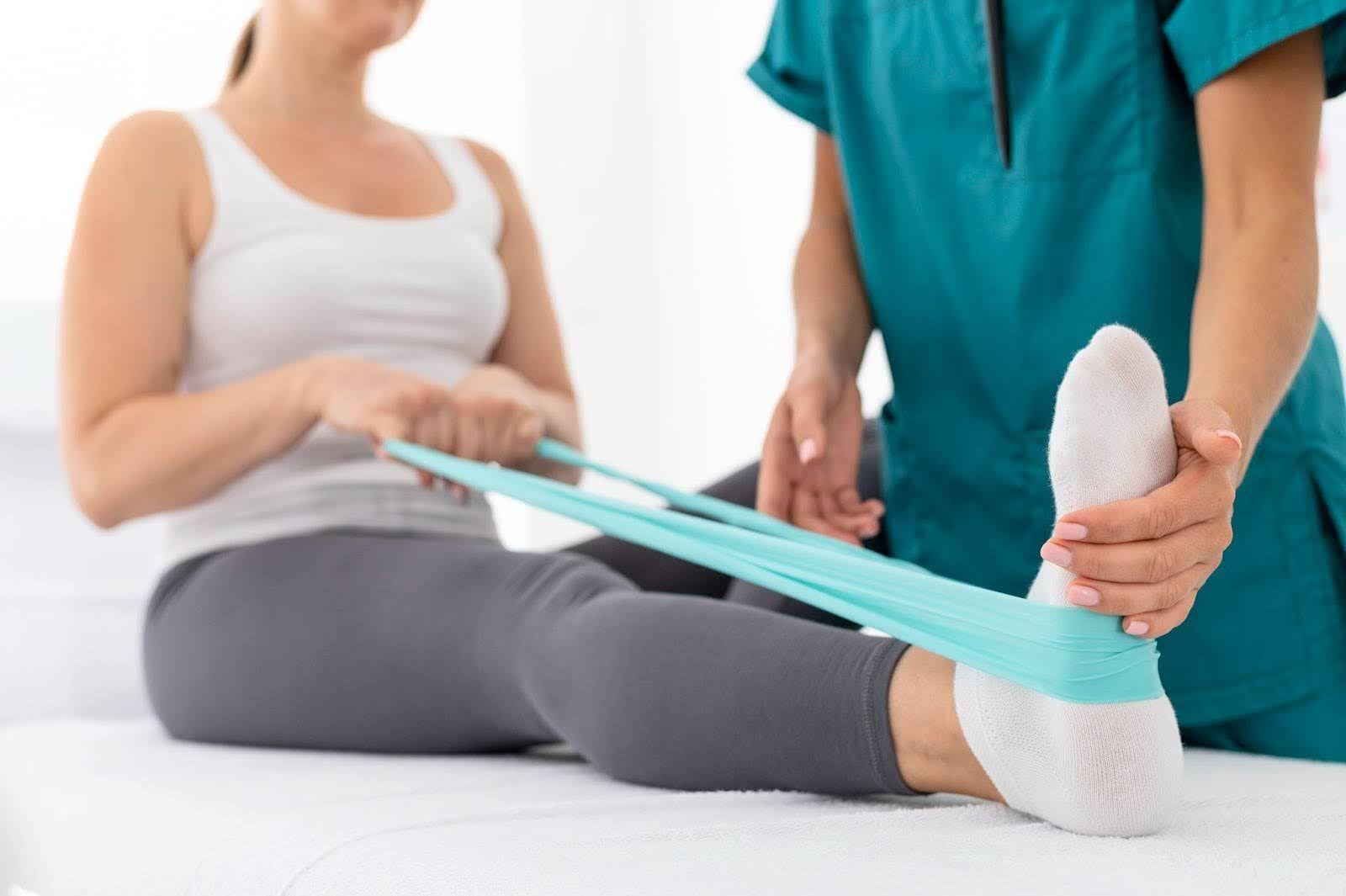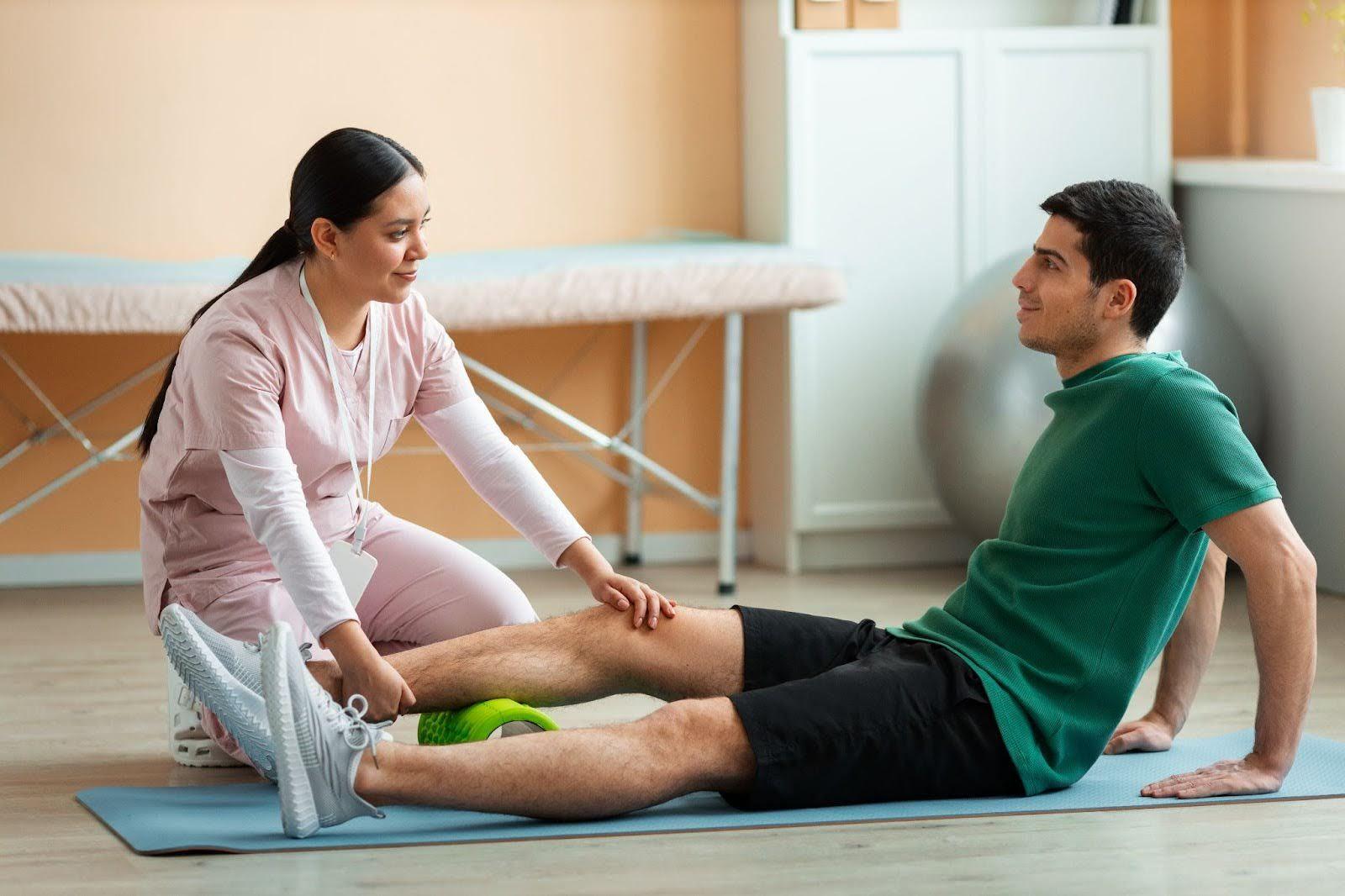Physical Therapy After Knee Surgery: Your Road to Recovery

Taking guidance from a doctor after knee surgery is critical; following the exercises guided by the doctor can give the best results safely.
After months or even years of knee pain and restricted movement, having surgery, whether a total knee replacement, ACL reconstruction, or meniscus repair, is often the ultimate goal. However, in reality, recovery starts after surgery, and the process begins with one of the most essential steps, which is Physical Therapy.
For most patients, the thought of beginning Physical Therapy can be scary. You may ask yourself, "How quickly should I start? Will it hurt? When will I be able to walk normally again?" These are all perfectly reasonable questions. The good news is, with the proper physical therapy regimen, you can rebuild your strength, mobility, and confidence each and every day. This guide will take you through everything you need to know about post-surgery rehab, so that you can heal confidently and with clarity.
Why Physical Therapy is Necessary After Knee Surgery
Even if your knee surgery went well, your knee isn't going to "heal itself". Physical therapy plays an important part in post-operative recovery, and neglecting or delaying it could result in complications and long-term mobility problems.
Physical Therapy is not just about movement, but also restoring strength in stabilizing muscles such as the quads, hamstrings, and calves that are essential for knee stability. Rehabilitation early on minimizes the risk of having complications such as blood clots, scar tissue, and joint stiffness. Eventually, it enables you to have confidence in daily activities such as walking and climbing stairs, while achieving long-term joint health and functioning.
When to Start Physical Therapy After Knee Surgery?
It is important to know when to start physical therapy after knee surgery. A majority of patients start walking therapy between 24 and 72 hours, which varies with the procedure done and personal rate of recovery.
- Total Knee Replacement (TKR): Physical Therapy is initiated within 1-2 days. Early attention focuses on leg movements, ankle pumps, and assisted walking.
- ACL Reconstruction: Therapy is initiated within a week, with a strong focus on swelling control, activation of the quad, and maximal knee extension.
- Meniscus Repair: Most people start Physical Therapy generally after 3-5 days of surgery. Early sessions focus on decreasing swelling, straightening the knee, and guarding the repair.

Starting Physical Therapy early can speed up recovery and enhance the long-term function of the knee. Always stick to your surgeon's protocol for the best safety results.
Phases of Physical Therapy Recovery After Knee Surgery
Recovery from knee surgery is a process and can take some time. Physical therapy (PT) is structured to walk you through four stages of recovery, each with objectives and milestones. Knowing the phases allows you to stay encouraged and monitor progress as you rebuild strength and mobility.
1. Acute Recovery Phase (Week 1-2)Decrease swelling and establish initial range of motion
During the first two weeks, your knee will be tender, healing, and swollen. PT emphasizes gentle exercises to aid in recovery without overworking the joint.
Key Focus Areas:
- Icing & Elevation to minimize swelling
- Compression bandages for support
- Passive range of motion (PROM) assisted by a therapist
- Walking with assistance (crutches/walker)
Don't force through pain; the intention is circulation and joint mobility.
2. Early Strengthening Phase (Week 3–6)Start developing strength in the leg muscles
With swelling reduced and improved movement, rehab progresses to gentle strengthening exercises.
Focus Area Priorities:
- Quad & hamstring activation
- Straight leg raises to strengthen
- Stationary bike for joint mobility
- Balance & proprioception drills
By 6 weeks, patients regain 50-70% knee strength with regular therapy.
3. Functional Training Phase (Week 7-12): Regain joint control and accomplish daily activities
At this point, PT starts to resemble functional movement, enabling you to walk independently and resume regular activities.
Key Focus Areas:
- Step-ups and mini squats
- Resistance band exercise
- Gait training for walking correction
- Core strengthening for balance in general
By the end of this phase, most individuals are able to walk and use stairs easily.
4. Advanced Strengthening & Return to Activity (3–6 Months) To safely return to sports or high-demand activities
This stage is tailored to your daily routine, whether you're an athlete or simply want to remain active and pain-free.
Major Areas of Focus:
- Agility & plyometric exercises
- Sport-specific training
- Running/jogging (only after being cleared)
- Ongoing flexibility & stretching
Re-injury is prevalent if you bypass this stage or return prematurely. Never disobey your PT and doctor's orders.
What You Can Expect During Physical Therapy Sessions?
If you've never undergone physical therapy, you might wonder what the heck goes on during a session. The good news is that each Physical Therapy session is designed for your individual recovery phase, level of pain, and mobility goals. Your physical therapist will challenge you progressively while keeping you safe and comfortable.

Gentle stretches every day can help with fast recovery after a knee surgery.
Here is an example of what a typical Physical Therapy session may look like:
1. Warm-Up and Mobility Work
Gentle exercises to warm up the joint and enhance circulation. It can involve heel slides, knee bends, or stationary cycling.
2. Strengthening Movements
Gradual resistance training for your quads, hamstrings, calves, and glutes. Assists in stabilizing your knee joint and inhibiting further injury.
3. Ice or Heat Application
Ice is usually applied to help decrease inflammation and swelling, particularly after exercise. Heat can be applied before sessions to help relax tight muscles and improve circulation.n
4. Stretching and Manual Therapy
Assisted stretching to enhance flexibility. Manual therapy (hands-on) by the therapist to ease stiffness, reduce scar tissue, and increase mobility
5. Home Exercise Instructions
You will be discharged with an individual exercise program, typically consisting of 5-10 easy movements. Consistency is the key. Evidence demonstrates that patients who adhere to home exercises recover 30-50% quicker than those who do not.
Record your exercises and symptoms to present to your therapist every week. It helps them make adjustments to your recovery plan.

Doing stretches with rolling foam can help with cramps after the surgery, and it can also help with stretching of the ligaments of the knee.
Tips for Optimum Recovery Following Knee Surgery
Recovering from knee surgery is not all about what takes place in the clinic, but also what you do on a daily basis, which is what matters. Here are the best ways to obtain optimum results from your physical therapy:
1. Keep to Your PT Schedule
Don't miss appointments. Consistency is your most effective recovery weapon. Your body needs repetitive use and reinforcement to heal and gain strength and function.
2. Follow Your Home Exercise Plan
It may be easy, but those "easy" home exercises are meant to consolidate gains from therapy. Skipping them may hinder progress and hold up your return to normal activities.
3. Keep in Touch With Your Therapist
- Always inform
- Sharp or increasing pain
- New numbness or swelling
- Emotional issues or fear of moving
Your therapist may modify your program or refer you to your surgeon if necessary.
4. Be Positive and Patient: Progress is slow, perhaps, at first.
Celebrate small victories: more bend in your knee, less wobble when walking, or walking further without pain.
5. Pay Attention to Nutrition and Hydration
A well-balanced diet rich in lean protein, calcium, vitamin D, and antioxidants supports tissue healing. Hydration helps reduce joint inflammation and aids in muscle recovery.
6. Use Assistive Devices Properly
Do not ditch your crutches, walker, or brace too early; they're there to protect you. Learn proper use from your therapist to avoid falls and overexertion.
Conclusion
Physical therapy after knee surgery is not optional; it is an integral part of your recovery. It gets you moving again, regains your strength, avoids complications, and most importantly, restores your confidence in your knee's ability to function.
Whether your motivation is returning to the tennis court, walking pain-free, or living your life without restrictions, you can recover through patience, perseverance, and encouragement.
So, have faith in the process. Rely on your Physical Therapy team. Stick to your home exercises and be gentle with yourself on the difficult days.
Frequently Asked Questions(FAQs)
1. Why is physical therapy required after knee surgery?
Physical therapy is required after knee surgery to help restore joint mobility, regain muscle strength, and prevent complications like stiffness or blood clots. If physical therapy is not done, recovery is incomplete or slow.
2. When should I start physical therapy after knee surgery?
Most patients are initiated with physical therapy 24–72 hours following surgery, depending on the procedure. Mobilization early in life with professional guidance allows for rapid and safe recovery.
3. What are the stages of recovery of post-knee surgery physical therapy?
There are four recovery stages of physical therapy following knee surgery: Acute Recovery, Early Strengthening, Functional Training, and Advanced Return to Activity. There is a goal in each phase to build strength, mobility, and confidence gradually.
4. What happens during a physical therapy visit after knee surgery?
A typical visit includes warm-ups, strengthening, stretching, manual therapy, and home exercise teaching. The plan is tailored to your stage of healing and recovery goals.
5. How long does physical therapy last after knee surgery?
Recovery time varies by patient and by surgery, but physical therapy sessions for most patients are 3 to 6 months. Adherence to at-home sessions and exercises is the single most crucial factor in healing successfully.
6. Can one perform home exercises of physical therapy following knee surgery?
Yes, home exercises are a very much-needed part of your rehabilitation process. To follow your physical therapist's instructions daily at home can speed recovery and enhance the return of knee function earlier.